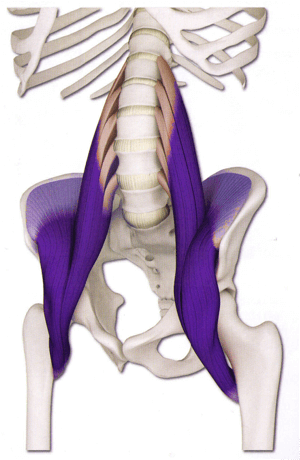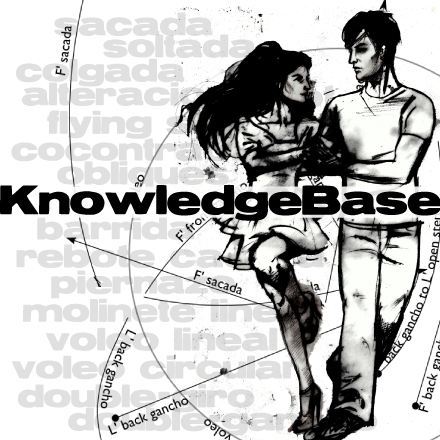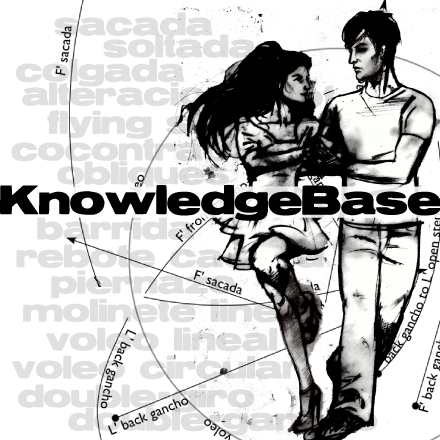 It’s not hard to move a person. It’s hard to move them gently. It’s not hard to move your own free leg. It’s hard to move it gracefully.
It’s not hard to move a person. It’s hard to move them gently. It’s not hard to move your own free leg. It’s hard to move it gracefully.
The key to gentleness and grace are your wonderful psoas muscles.
The psoas is used to increase hip flexion to mark direction toward and away from the mark, and it’s used to move the Revel’s free leg through the air.
The psoas’ special anatomy
In the image to right, the psoas is the longer muscle that attaches to the spine. (The psoas works with the iliacus or iliopsoas, which wraps around the inside of the hip bones. The iliacus doesn’t move much. ) The psoas shares two special characteristics with another key muscle, the piriformis (part of the stabilization chain):
- Both of these muscles are among the few that connect directly to the spine.
- They are the only muscles that connect the upper body to the lower body.
This is important because if we want to achieve the most subtle level of connection, we can understand that the motion of the spine can transmit directly to the psoas.
Stable insertion points
In order for the psoas (or any muscle) to work at optimal power to achieve gentleness and grace, its insertion point must be stable. In the case of the psoas, this means that the spine needs to be stable. The base leg/arc/arch of connection enable the freedom and fluidity of the free leg. See the muscles of the stabilization chain.
Click for [popup_trigger id=”20010″]Exercises[/popup_trigger].











